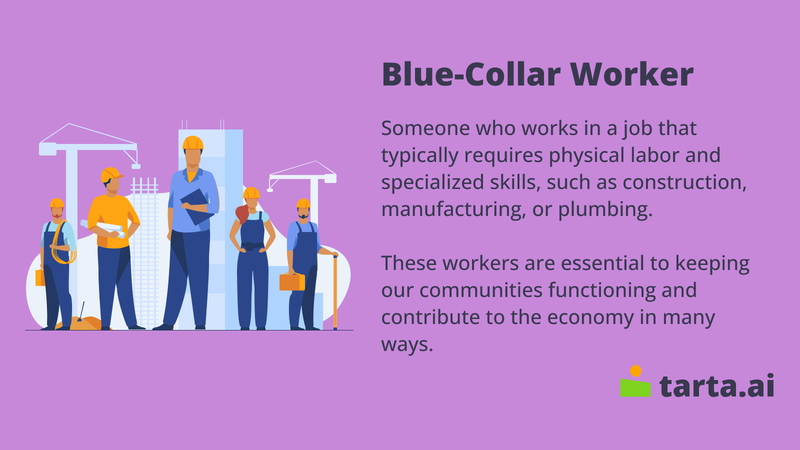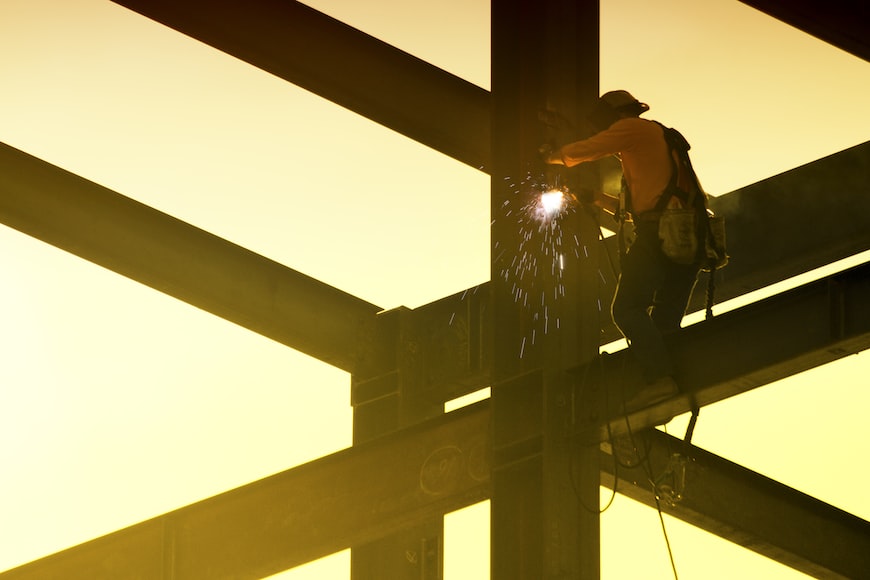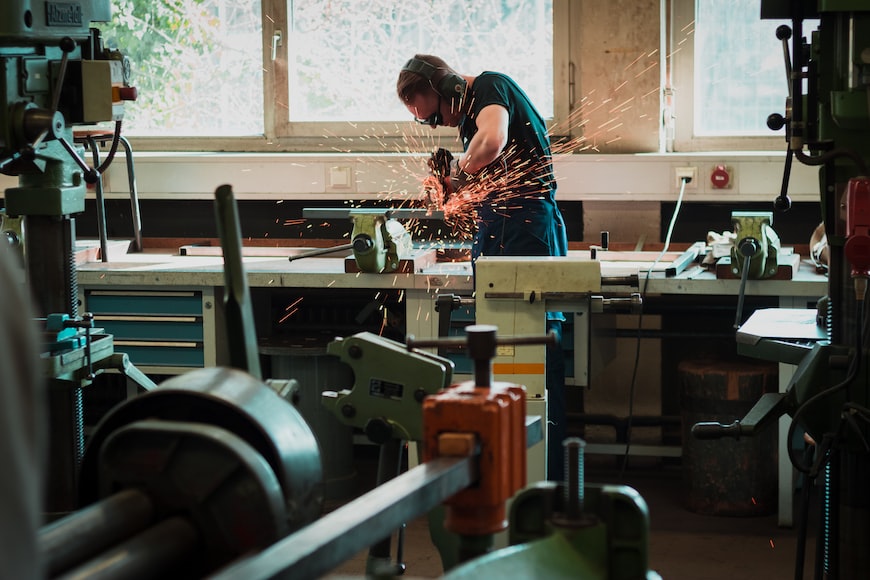Breaking Down Stereotypes: The Truth About Blue-Collar Workers
Blue-collar workers are individuals who perform manual labor jobs in industries such as construction, manufacturing, transportation, and warehousing. Despite their essential contributions to society, blue-collar workers are often subjected to negative stereotypes that perpetuate misconceptions about their abilities and worth.

In this article, we will break down common stereotypes surrounding blue-collar workers, discuss the reality of their work, and emphasize the importance of recognizing their contributions to society. By challenging these stereotypes, we hope to encourage a more positive and accurate view of blue-collar work and those who perform it.
The Reality of Blue-Collar Work
Blue-collar jobs cover a wide range of industries and positions, including electricians, plumbers, welders, carpenters, and mechanics, among others. These jobs require a variety of skills and levels of education, from apprenticeships and vocational training to certifications and associate degrees. While some blue-collar jobs may not require formal education, many require ongoing training to maintain or advance in their careers. Here are some examples of blue-collar jobs including construction workers, electricians, plumbers, mechanics, factory workers, and truck drivers.
The average salary for blue-collar workers varies widely depending on the industry, experience, and location. According to the Bureau of Labor Statistics, the median annual wage for blue-collar jobs in 2020 was $37,320, with some positions earning significantly more, such as commercial pilots and electrical power-line installers and repairers.
Interesting fact:
According to the Bureau of Labor Statistics, blue-collar jobs make up 29% of all jobs in the United States.
In addition to salary, many blue-collar jobs offer benefits such as health insurance, retirement plans, and paid time off. Unionized blue-collar workers often have access to even more robust benefits packages, including better wages and job security.
Overall, blue-collar work provides a viable path to financial stability and upward mobility for individuals who may not have pursued traditional four-year college degrees. It is important to recognize the value of these jobs and the contributions of blue-collar workers to the economy and society.
Debunking Common Stereotypes
- Blue-collar work is only for people who can't get a "real" job
This stereotype implies that blue-collar work is a last resort for individuals who are not qualified for "real" jobs, such as those in white-collar industries. However, this is not true. Many people choose blue-collar work because it provides stable employment and opportunities for advancement, as well as the satisfaction of working with their hands and seeing tangible results from their labor. Additionally, some blue-collar jobs, such as skilled trades, require specialized training and expertise, making them highly valued and respected professions.
- Blue-collar workers are uneducated and unskilled
This stereotype is not only inaccurate, but it also undermines the intelligence and expertise required for many blue-collar jobs. While some blue-collar jobs may not require formal education beyond high school, they often require extensive on-the-job training and certifications. For example, carpenters and electricians must have knowledge of building codes and safety regulations, while plumbers need to understand complex piping systems. These skills require both intelligence and practical know-how.
- Blue-collar workers are all men
While historically, blue-collar work has been male-dominated, the industry has seen a significant increase in women workers in recent years. Women are now actively seeking and thriving in blue-collar jobs, such as welding and construction, as they offer equal opportunities for skill development and career advancement. It is important to acknowledge and support this trend by promoting gender equality in the workforce.
Interesting fact:
Women make up 16% of the blue-collar workforce in the United States.
- Blue-collar workers are all lower class and poor
This stereotype perpetuates a classist view of blue-collar work, assuming that only those who are struggling financially take on such jobs. In reality, blue-collar workers come from all economic backgrounds, including the middle and upper classes. Many blue-collar jobs, such as plumbing and HVAC installation, require specialized skills and are in high demand, leading to higher salaries and job security.
Overall, it is essential to break down these harmful stereotypes and recognize the value of blue-collar work and the individuals who perform it. Blue-collar jobs provide an essential function in society and offer meaningful and rewarding careers for many.
The Importance of Blue-Collar Jobs
Blue-collar jobs play a crucial role in the economy, as they are often the backbone of many industries, such as construction, manufacturing, and transportation. They contribute to the creation of goods and services that are essential to daily life, from building roads and bridges to producing food and goods. Without blue-collar workers, the economy would not be able to function at its current level.

Photo: Jason Richard/Unsplash
Furthermore, blue-collar work is essential to society, as it involves tasks that directly impact people's lives. For example, construction workers build homes and public buildings, while plumbers ensure access to clean water and functional sewage systems. Without blue-collar workers, these essential services would not be available.
Beyond its economic and societal importance, blue-collar work can also offer personal fulfillment and job satisfaction. Many blue-collar workers take pride in their work and enjoy seeing the tangible results of their labor. Working with their hands and creating something tangible can be deeply satisfying and fulfilling. Additionally, blue-collar jobs often offer opportunities for career advancement, allowing workers to gain new skills and take on new challenges.
Blue-collar jobs are crucial to the functioning of society and the economy, and they offer fulfilling and rewarding career paths for many individuals. It is important to recognize and appreciate the value of blue-collar work and the individuals who perform it.
Challenges and Advancements in Blue-Collar Work
Blue-collar work has faced several challenges and advancements in recent years, which have impacted the industry in significant ways. One of the most prominent challenges is the rise of technological advancements and automation, which has led to the displacement of some blue-collar jobs. For example, machines can now perform tasks that were previously done by hand, leading to a decrease in the need for manual labor. However, this trend has also created new opportunities in fields such as robotics and automation, requiring workers to adapt and learn new skills.
Another significant challenge for blue-collar workers has been the impact of the COVID-19 pandemic. Many blue-collar jobs, such as those in the hospitality and service industries, were particularly hard hit by the pandemic, as they were deemed non-essential and had to shut down temporarily. This led to job losses and economic hardships for many blue-collar workers. However, the pandemic has also highlighted the importance of blue-collar work in providing essential services, such as healthcare and transportation, and has led to increased recognition and appreciation for these workers.
To overcome these challenges and advancements, it is crucial for blue-collar workers and the industry to adapt and evolve. This may involve gaining new skills and education, learning how to work with new technology and automation, and being open to new opportunities and industries. Additionally, it is important to advocate for policies that support blue-collar workers, such as job training and education programs, fair wages, and safe working conditions.

Photo: Maxime Agnelli/Unsplash
Overall, while blue-collar work has faced several challenges and advancements in recent years, there are also new opportunities and potential for growth and advancement in the industry. It is crucial for workers and the industry to adapt and evolve to meet these challenges and continue to provide essential services to society.
In conclusion, blue-collar work is a diverse and essential industry that plays a crucial role in the economy and society. It offers fulfilling and rewarding career paths for many individuals, regardless of gender, education level, or socioeconomic background. However, blue-collar work is often plagued by stereotypes and misconceptions that can limit opportunities and undermine the contributions of blue-collar workers.
It is important to break down these stereotypes and recognize the value and importance of blue-collar work. By doing so, we can promote a more accurate understanding of the industry, support blue-collar workers, and create opportunities for growth and advancement.
As individuals, we can help break down stereotypes by educating ourselves and others about the realities of blue-collar work, challenging stereotypes when we encounter them, and supporting policies and programs that promote the growth and advancement of blue-collar workers.
- Blue-collar work is a diverse and essential industry that plays a crucial role in the economy and society.
- Stereotypes and misconceptions surrounding blue-collar work can limit opportunities and undermine the contributions of blue-collar workers.
- Blue-collar work offers fulfilling and rewarding career paths for many individuals, regardless of gender, education level, or socioeconomic background.
- Technological advancements and automation have led to new opportunities in blue-collar fields, requiring workers to adapt and learn new skills.
- The COVID-19 pandemic has highlighted the importance of blue-collar work in providing essential services and has led to increased recognition and appreciation for these workers.
- Breaking down stereotypes and advocating for policies and programs that promote the growth and advancement of blue-collar workers can create opportunities for growth and advancement and promote a more inclusive and supportive society.
FAQ
What is a blue-collar worker?
A blue-collar worker is someone who performs manual labor or works in an occupation that requires specialized skills, typically in industries such as construction, manufacturing, or transportation.
What is the difference between a blue-collar and white-collar worker?
The main difference between blue-collar and white-collar workers is the type of work they perform. Blue-collar workers typically perform manual labor, while white-collar workers typically perform professional, managerial, or administrative tasks.
What education is required for blue-collar jobs?
The educational requirements for blue-collar jobs vary depending on the specific occupation. Some jobs may only require a high school diploma or equivalent, while others may require technical training or an apprenticeship.
How much do blue-collar workers make?
The pay for blue-collar jobs varies depending on the specific occupation, but the average hourly wage for blue-collar workers in the United States is $21.35 according to the Bureau of Labor Statistics.
What is the future of blue-collar jobs?
Advancements in technology and automation are expected to impact blue-collar jobs in the coming years, with some jobs being replaced by machines. However, new opportunities are also expected to arise in fields such as renewable energy and maintenance of automated systems.